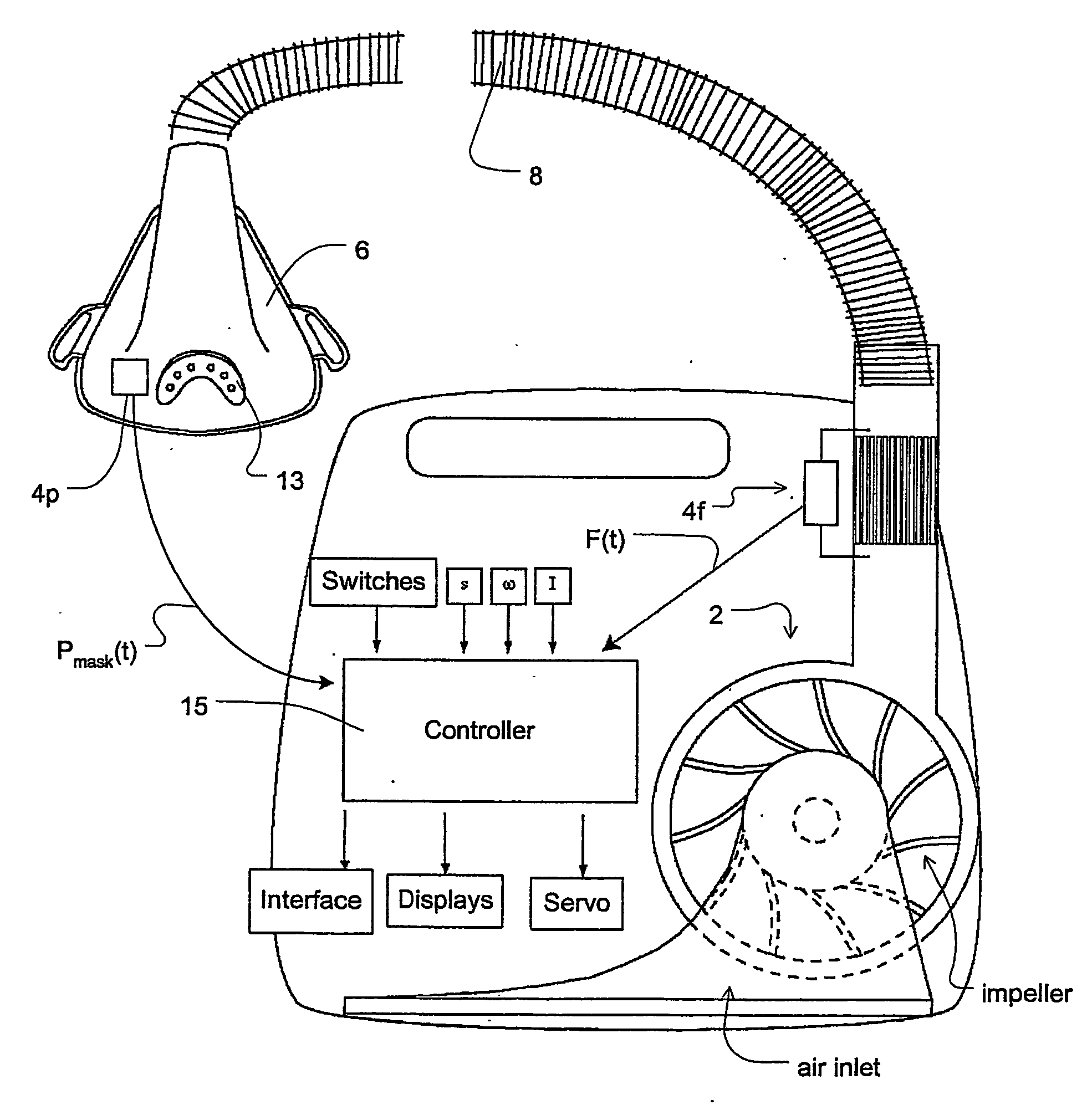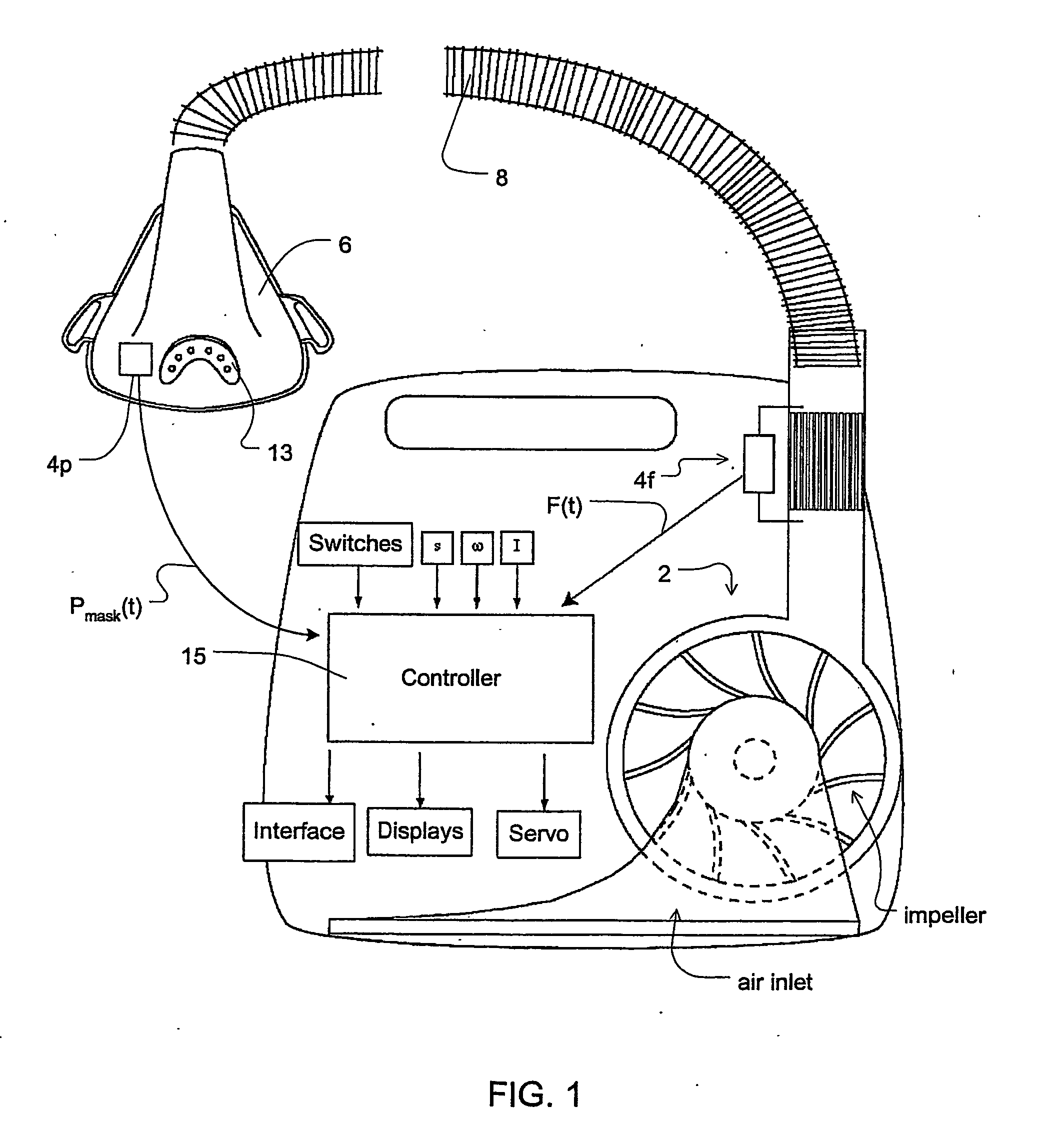Methods and apparatus for the sytematic control of ventilatory support in the presence of respiratory insufficiency
a ventilatory support and respiratory insufficiency technology, applied in the field of sytematic control of ventilatory support in the presence of respiratory insufficiency, can solve the problems of lowering the arterial partial pressure of oxygen, worse gas exchange during sleep, and increasing the arterial partial pressure of carbon dioxide, so as to reduce the gain, reduce the loss, and reduce the effect of ventilatory support respons
- Summary
- Abstract
- Description
- Claims
- Application Information
AI Technical Summary
Benefits of technology
Problems solved by technology
Method used
Image
Examples
Embodiment Construction
[0038] In reference to FIG. 1, the ventilator relies on a servo-controlled loop for governing the operation of blower 2. The device includes a flow sensor 4f, pressure sensor 4p, a mask 6, and an air delivery conduit 8 for connection between the blower 2 and the mask 6. Exhaust gas is vented via exhaust 13. Mask flow may be measured using a pneumotachograph and differential pressure transducer to derive a flow signal F(t). Alternatively, the pneumotachograph may be replaced by a bundle of small tubes aligned in parallel with the flow. from the blower with the pressure difference measured by the differential pressure transducer across the bundle. Mask pressure is preferably measured at a pressure tap using a pressure transducer to derive a pressure signal Pmask(t). The pressure sensor 4f and flow sensor 4p have been shown only symbolically in FIG. 1 since those skilled in the art will understand how to measure flow and pressure. Flow F(t) and pressure Pmask(t) signals are sent to a c...
PUM
 Login to View More
Login to View More Abstract
Description
Claims
Application Information
 Login to View More
Login to View More - R&D
- Intellectual Property
- Life Sciences
- Materials
- Tech Scout
- Unparalleled Data Quality
- Higher Quality Content
- 60% Fewer Hallucinations
Browse by: Latest US Patents, China's latest patents, Technical Efficacy Thesaurus, Application Domain, Technology Topic, Popular Technical Reports.
© 2025 PatSnap. All rights reserved.Legal|Privacy policy|Modern Slavery Act Transparency Statement|Sitemap|About US| Contact US: help@patsnap.com



